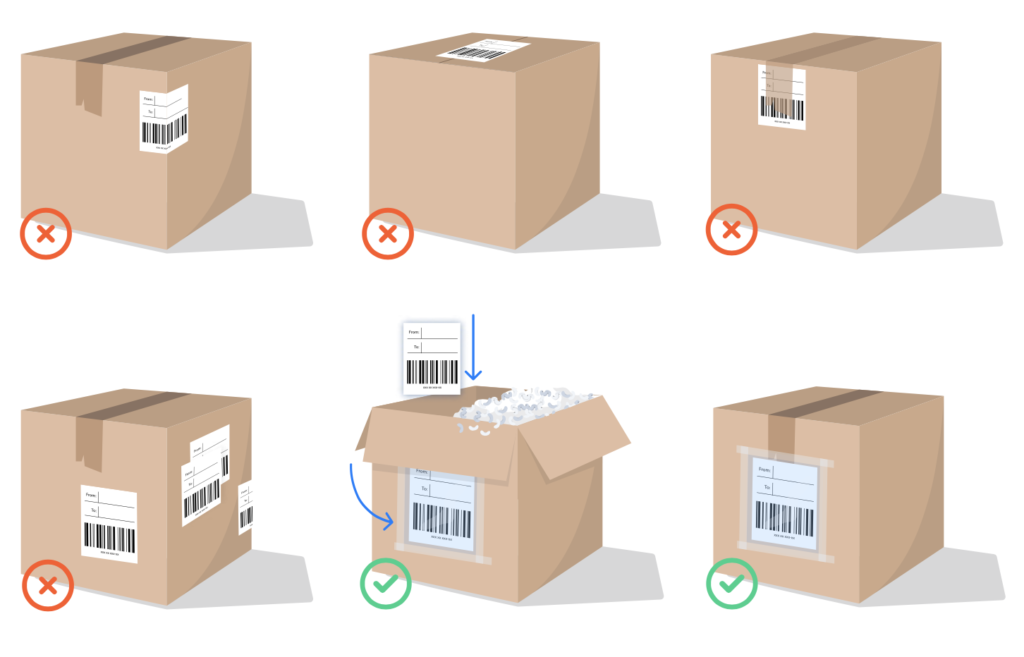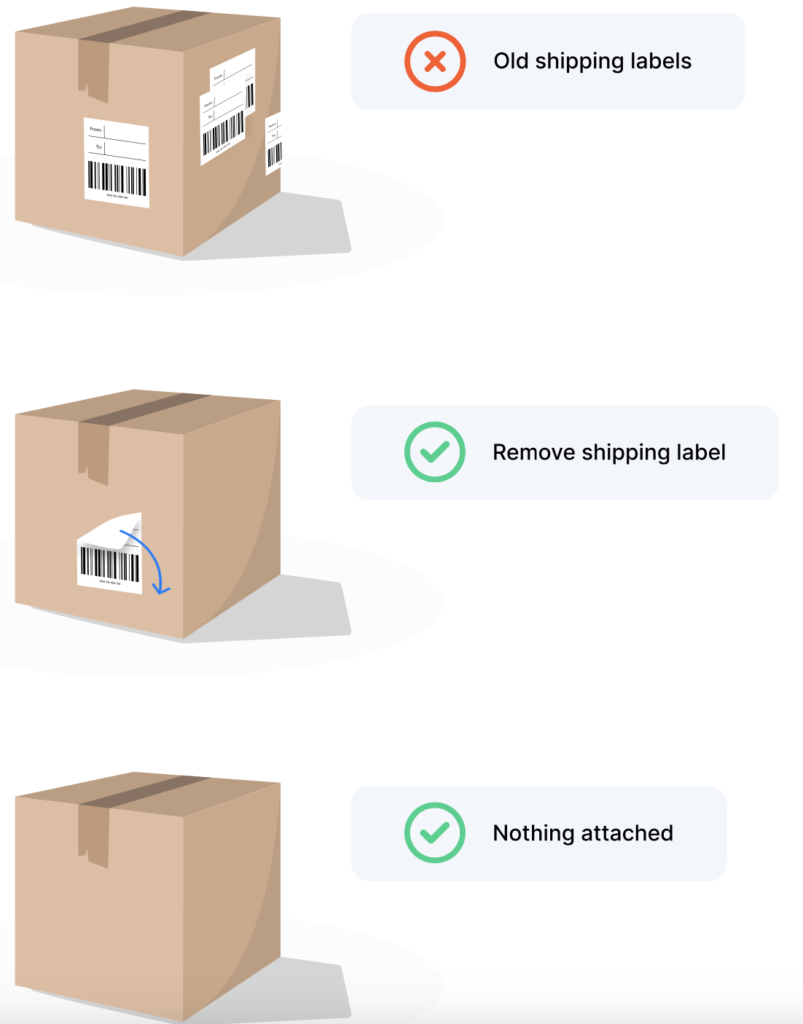Comprehensive Packing Guide for Safe and Secure Shipments
Introduction
Proper packaging is essential to ensure your shipment reaches its destination safely and without delays. Carriers have strict requirements, and failing to meet them could result in refused pickup, damage to your goods, or additional charges. This guide provides detailed instructions on how to properly pack your shipment, whether it’s a small parcel or a large pallet.
Packing Guidelines for Boxes
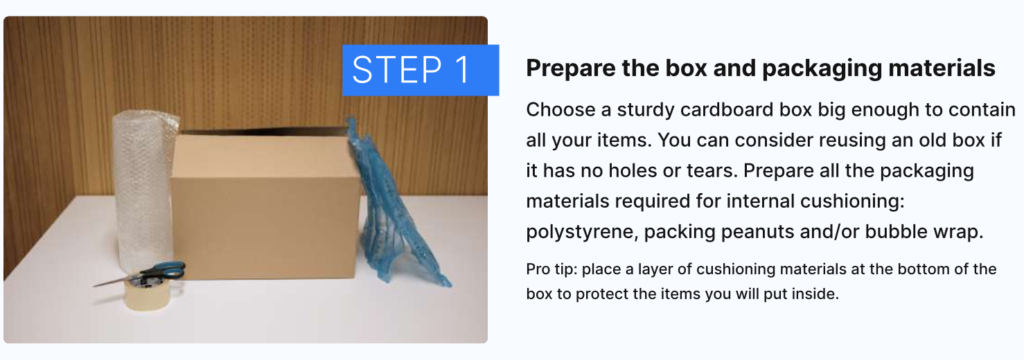
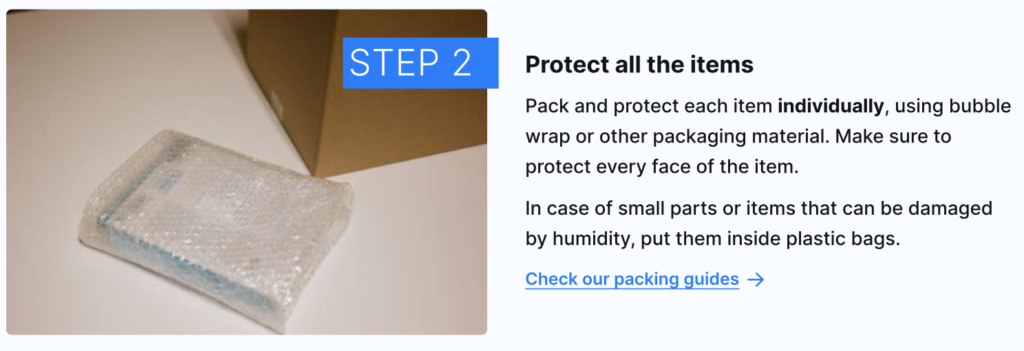
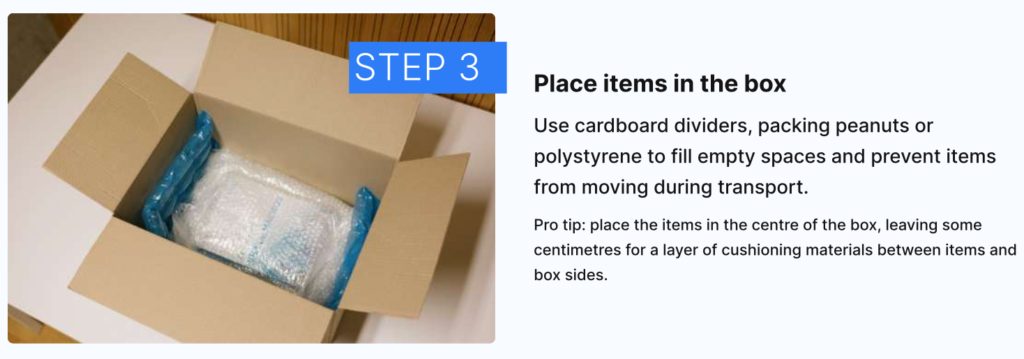
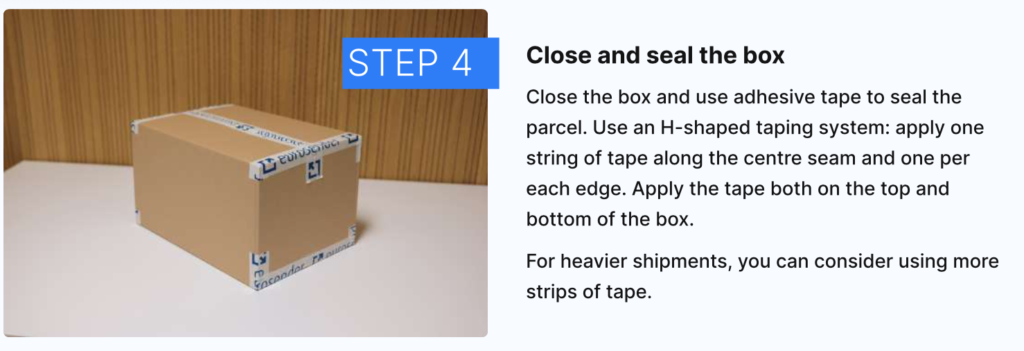
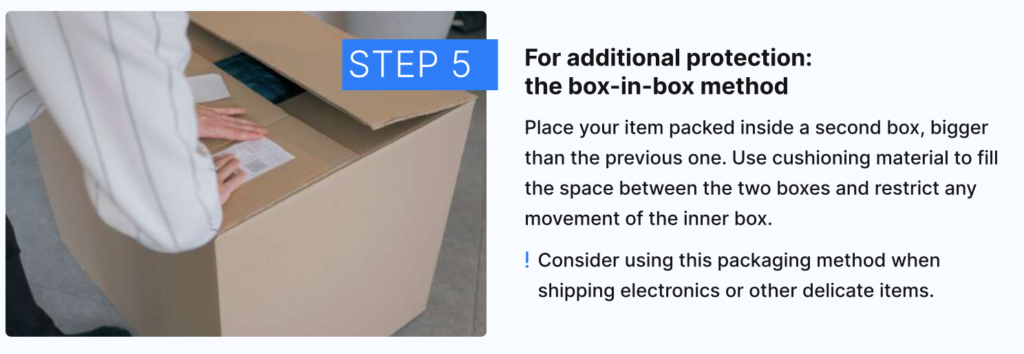
1. Choose the Right Box
- Use a new, sturdy, double-walled corrugated box for fragile or heavy items.
- Ensure the box is slightly larger than your contents to allow for proper cushioning.
- Avoid reusing old boxes, as they may have weakened structural integrity.
2. Cushioning & Internal Protection
- Wrap items individually using bubble wrap, foam, or packing paper.
- Fill empty spaces with void-fill material such as packing peanuts or crumpled paper to prevent movement inside the box.
- For fragile items, use additional cushioning layers and label the box accordingly.
3. Sealing the Box
- Use high-quality packing tape (not duct tape or masking tape).
- Apply the ‘H’ method: Seal along the center seam and across the edges.
- Ensure all flaps are properly closed with no gaps.
4. Labeling
- Clearly print the provided Label with transparent tape, also taping ontop of it in case the paper rubs off.
- Attach a duplicate label inside the box in case the external label is damaged.
- If applicable, mark the box with “Fragile” or “This Side Up” stickers.
Packing Guidelines for Pallets
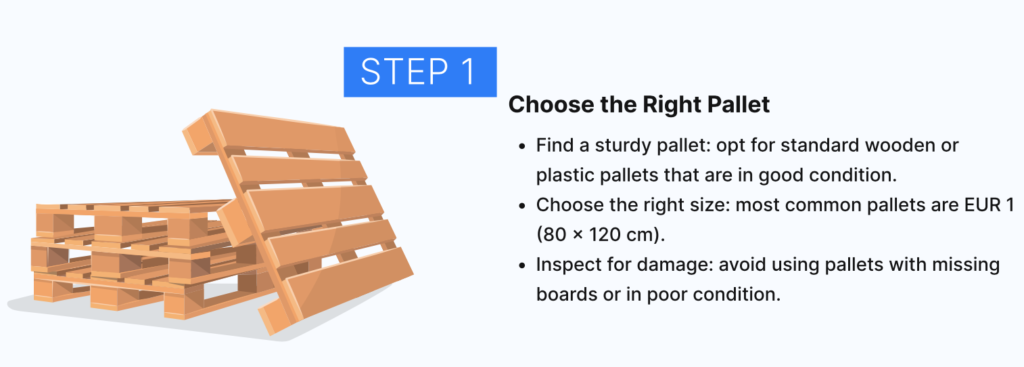
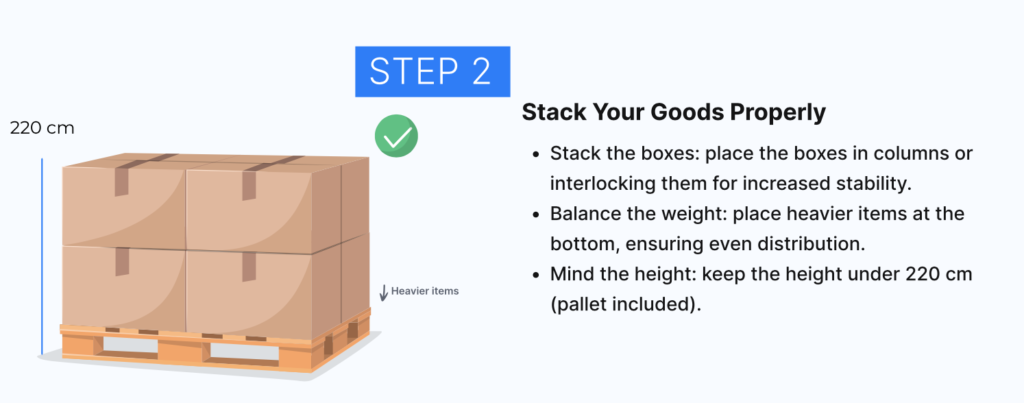
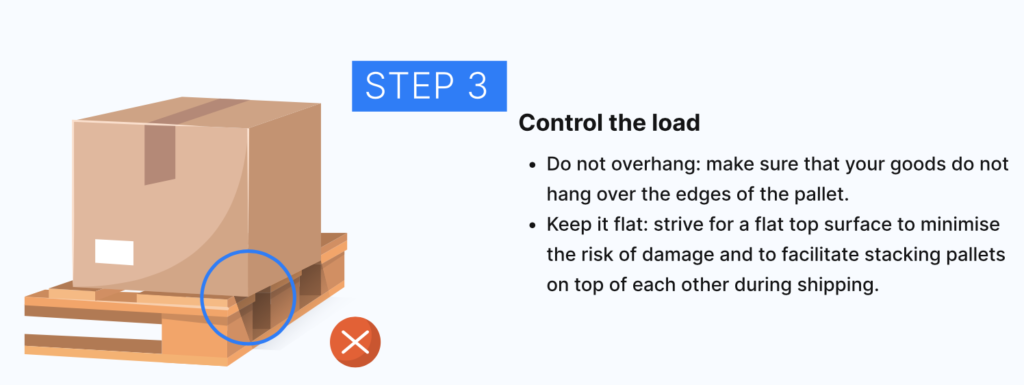
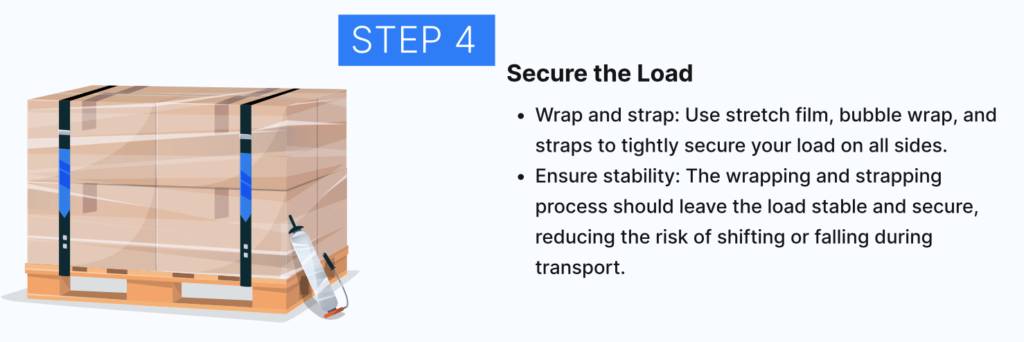
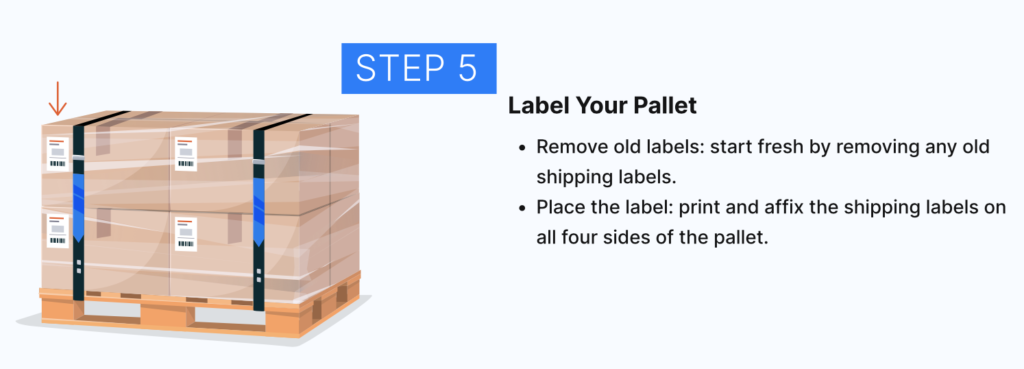
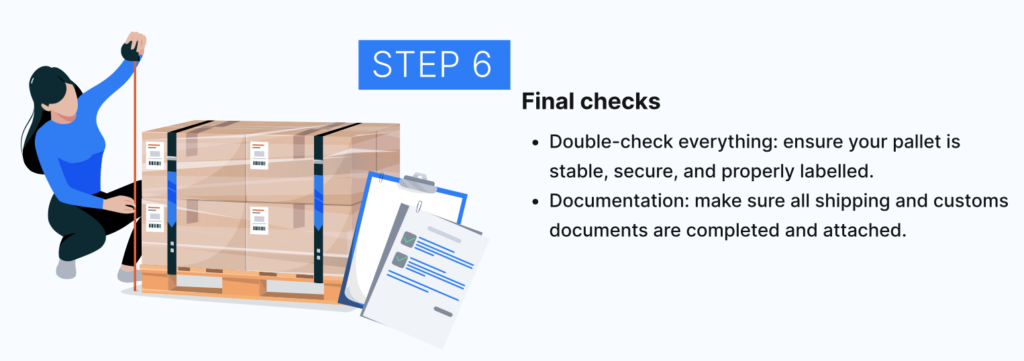
1. Selecting the Right Pallet
- Use a standard-sized wooden or plastic pallet (typically 120×80 cm or 48×40 inches).
- Ensure the pallet is in good condition with no broken boards or exposed nails.
- The pallet should be strong enough to support the weight of the shipment.
2. Stacking Items Properly
- Distribute weight evenly to avoid tipping during transit.
- Heavier items should be placed at the bottom, with lighter items on top.
- Do not exceed the edges of the pallet to prevent damage.
3. Securing the Load
- Use industrial-strength stretch wrap to wrap the entire pallet securely.
- Straps or bands can be used for added reinforcement, especially for heavier loads.
- If stacking multiple boxes, ensure they are tightly packed and strapped together.
4. Labeling the Shipment
- Attach the shipping label to at least two sides of the pallet.
- If the shipment contains fragile items, use appropriate warning labels.
🧱 Stackable vs. Non-Stackable Pallets: What’s the Difference?
When preparing a shipment on a pallet, it’s important to understand whether your pallet is stackable or non-stackable, as this impacts how transporters handle your goods and may affect your shipping cost.
✅ Stackable Pallets
A stackable pallet is one that is safely designed to support the weight of another pallet on top of it during transport or storage. To be considered stackable:
- The top surface must be flat, solid, and stable.
- The items must be packed in strong, sealed boxes or containers of uniform shape and height.
- There should be no overhanging items, protrusions, or uneven surfaces.
- The pallet must be securely wrapped and strapped to prevent shifting.
Why it matters:
Stackable pallets are more cost-efficient for transport companies, as they allow for better use of vertical space in a truck or warehouse. As a result, shipping stackable pallets can often be cheaper.
🚫 Non-Stackable Pallets
A non-stackable pallet is one that cannot safely support the weight of another pallet on top due to how the items are packed or the nature of the goods.
This may apply if:
- Items are fragile, oddly shaped, or irregularly stacked.
- The top is not flat or includes protruding elements.
- The load is unstable or sensitive (e.g., marked as “FRAGILE” or requiring special handling).
- The packaging is not strong enough to withstand pressure from above.
Why it matters:
Non-stackable pallets require more space and special handling, and are therefore more expensive to ship. Carriers may charge an additional non-stackable surcharge due to the reduced efficiency in loading.
📦 Tip:
When in doubt, assume your pallet must be stackable to avoid unnecessary charges. Always follow our Packing Guide to ensure your shipment meets transport standards.
If you’re not sure whether your pallet qualifies, feel free to send us a photo, and our team will help you confirm.
Additional Considerations
Weight & Size Compliance
- Always weigh and measure your shipment as much as in advance as possiblebefore pickup to avoid additional charges.
- If your shipment exceeds the agreed-upon dimensions or weight, notify us in advance so we may negotiate the new weight and size with the carrier.
Prohibited & Restricted Items
- Some items are restricted or prohibited from transport. Before shipping, review our Prohibited Items List to ensure compliance.
Why Proper Packing Matters
- Well-packed shipments are less likely to be damaged in transit.
- Carriers may refuse improperly packed items, resulting in delays or in some cases, cancelling the shipment if it was not disclosed in advance. If the shipment is cancelled by the carrier, we are unable to provide a refund.
- Secure packaging prevents costly additional fees due to repackaging or rebooking.
By following these packing guidelines, you can ensure that your shipment arrives at its destination safely and on time. If you have any questions, feel free to contact our support team for further assistance.
